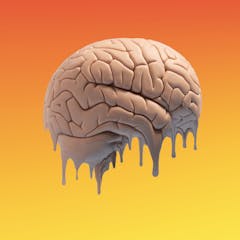
Articles on Nervous system
Displaying 1 - 20 of 24 articles

Our bodies have a dedicated channel for sensing only the very lightest of touches.

Here’s what’s going on in your body when you drink alcohol just before bedtime. And if you want to drink at the Christmas party, we have some tips on how to protect your sleep.

Rapidly changing temperatures and sensory environments are challenging the nervous systems of many species. Animals will be forced to evolve to survive.

Itch-sensing neurons in your skin are intertwined with your immune cells. Counterintuitively, the molecule that connects them triggers responses that both worsen and improve skin conditions.

Space can damage everything from your cardiovascular and nervous systems to your mental health – long voyages can feel isolating for many.

Your thoughts, emotions and behaviours arise from the complex network of electric activity in your brain. But what can we do when we need to tweak it?

New research has found what may be language in electrical impulses transmitted between mushrooms.

New research offers insights into the brain after COVID-19 that may have implications for our understanding of long COVID-19 and how the disease affects our senses of taste and smell.

Reduced brain volume in people who have experienced COVID-19 resembles brain changes typically seen in older adults. The implications of these findings are not yet clear.

Researchers are piecing together clues to better understand the puzzling array of symptoms in those who never seem to fully recover from COVID-19.

This antibody protects patients from viruses, even while on immunosuppressant drugs.

Plants clearly lack brains but does all intelligence have to look like our own?

Most of the time, different parts of your nervous system work in balance. But sometimes things can get out of whack – and that’s when you might end up experiencing what medics call syncope.

When nerve cells in the brain pass electrical signals to each other, they create tiny electric fields that can be sensed from outside the skull.

Our everyday lives are full of decision dilemmas. To understand why we make particular choices, scientists investigate how our brain deals with uncertainty.

Pins and needles are a warning to tell us to move our limbs about, because long-term nerve entrapment can cause permanent damage.

There was once a chicken called Miracle Mike who lived for 18 months without a head: it’s all to do with nerves.

Scientists invented chemical weapons; some are now working to destroy them. New biomolecular design techniques let researchers design proteins that can destroy nerve agents in bodies.

Neuroscientists are questioning how it is that physical matter comes together to make the mind.

We asked an expert to explain why we get that odd fluttering feeling when we are nervous.
